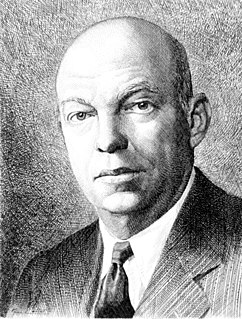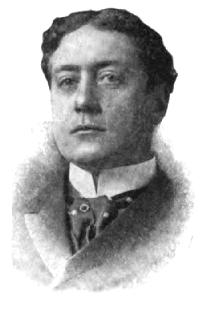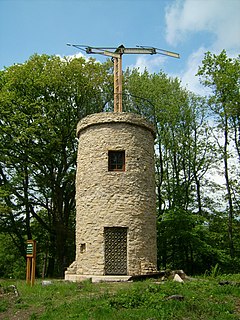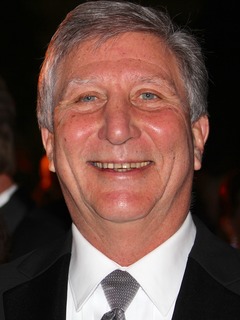
Edwin Howard Armstrong was an American electrical engineer and inventor, who developed FM radio and the superheterodyne receiver system. He held 42 patents and received numerous awards, including the first Medal of Honor awarded by the Institute of Radio Engineers, the French Legion of Honor, the 1941 Franklin Medal and the 1942 Edison Medal. He was inducted into the National Inventors Hall of Fame and included in the International Telecommunication Union's roster of great inventors.

Sir John Ambrose Fleming FRS was an English electrical engineer and physicist who invented the first thermionic valve or vacuum tube, designed the radio transmitter with which the first transatlantic radio transmission was made, and also established the right-hand rule used in physics.
The early history of radio is the history of technology that produces and uses radio instruments that use radio waves. Within the timeline of radio, many people contributed theory and inventions in what became radio. Radio development began as "wireless telegraphy". Later radio history increasingly involves matters of broadcasting.

Harry Nyquist was a Swedish physicist and electronic engineer who made important contributions to communication theory.

Harold Stephen Black was an American electrical engineer, who revolutionized the field of applied electronics by discovering the negative feedback amplifier in 1927. To some, his discovery is considered the most important breakthrough of the twentieth century in the field of electronics, since it has a wide area of application. This is because all electronic devices are inherently nonlinear, but they can be made substantially linear with the application of negative feedback. Negative feedback works by sacrificing gain for higher linearity. By sacrificing gain, it also has an additional effect of increasing the bandwidth of the amplifier. However, a negative feedback amplifier can be unstable such that it may oscillate. Once the stability problem is solved, the negative feedback amplifier is extremely useful in the field of electronics. Black published a famous paper, Stabilized feedback amplifiers, in 1934.

Irving "Al" Gross was a pioneer in mobile wireless communication. He created and patented many communications devices, specifically in relation to an early version of the walkie-talkie, Citizens' Band radio, the telephone pager and the cordless telephone.

John Stone Stone was an American mathematician, physicist and inventor. He initially worked in telephone research, followed by influential work developing early radio technology, where he was especially known for improvements in tuning. Despite his often advanced designs, the Stone Telegraph and Telephone Company failed in 1908, and he spent the remainder of his career as an engineering consultant.

The history of telecommunication began with the use of smoke signals and drums in Africa, Asia, and the Americas. In the 1790s, the first fixed semaphore systems emerged in Europe. However, it was not until the 1830s that electrical telecommunication systems started to appear. This article details the history of telecommunication and the individuals who helped make telecommunication systems what they are today. The history of telecommunication is an important part of the larger history of communication.

The carbon microphone, also known as carbon button microphone, button microphone, or carbon transmitter, is a type of microphone, a transducer that converts sound to an electrical audio signal. It consists of two metal plates separated by granules of carbon. One plate is very thin and faces toward the speaking person, acting as a diaphragm. Sound waves striking the diaphragm cause it to vibrate, exerting a varying pressure on the granules, which in turn changes the electrical resistance between the plates. Higher pressure lowers the resistance as the granules are pushed closer together. A steady direct current is passed between the plates through the granules. The varying resistance results in a modulation of the current, creating a varying electric current that reproduces the varying pressure of the sound wave. In telephony, this undulating current is directly passed through the telephone wires to the central office. In public address systems it is amplified by an audio amplifier. The frequency response of most carbon microphones, however, are limited to a narrow range, and the device produces significant electrical noise.

William Littell Everitt was a noted American electrical engineer, educator, and founding member of the National Academy of Engineering. He received his Ph.D. from The Ohio State University in 1933. He was adviser of numerous outstanding scientists at OSU including Karl Spangenberg, and Nelson Wax. His PhD adviser was Frederic Columbus Blake.
Harold Alden Wheeler was a noted American electrical engineer.
Henry Earle Vaughan, better known as H. Earle Vaughan, was an American telephony engineer, responsible for system and software design for Bell Laboratories' Electronic Switching System No. 1 ESS, and for planning and development of No. 4 Electronic Switching System for long-distance telephony.

John Renshaw Carson was an American transmission theorist for early communications systems. He invented single-sideband modulation and developed the Carson bandwidth rule for estimating frequency modulation (FM) bandwidth. In 2013 Carson was inducted into the Electronic Design Hall of Fame for his contributions to communications.
William H. Doherty was an American electrical engineer noted for his invention of the Doherty amplifier.
Frederick Britton Llewellyn was a noted American electrical engineer.
Jesse Eugene Russell is an American inventor. He was trained as an electrical engineer at Tennessee State University and Stanford University, and worked in the field of wireless communication for over 20 years. He holds patents and continues to invent and innovate in the emerging area of next generation broadband wireless networks, technologies and services, often referred to as 4G. Russell was inducted into the US National Academy of Engineering for his contributions to the field of wireless communication. He pioneered the field of digital cellular communication in the 1980s through the use of high power linear amplification and low bit rate voice encoding technologies and received a patent in 1992 for his work in the area of digital cellular base station design.
The Doherty amplifier is a modified class B radio frequency amplifier invented by William H. Doherty of Bell Telephone Laboratories Inc in 1936. Whereas conventional class B amplifiers can clip on high input-signal levels, the Doherty power amplifier can accommodate signals with high peak-to-average power ratios by using two amplifier circuits within the one overall amplifier to accommodate the different signal levels. In this way, the amplifier achieves a high level of linearity while retaining good power efficiency.

Richard H. Frenkiel is an American engineer, known for his significant role in the early development of cellular telephone networks.

John Mathew Cioffi is an American electrical engineer, educator and inventor who has made contributions in telecommunication system theory, specifically in coding theory and information theory. Best known as "the father of DSL," Cioffi's pioneering research was instrumental in making digital subscriber line (DSL) technology practical and has led to over 400 publications and more than 100 pending or issued patents, many of which are licensed.

Electronic engineering is a sub-discipline of electrical engineering which emerged in the early 20th century and is distinguished by the additional use of active components such as semiconductor devices to amplify and control electric current flow. Previously electrical engineering only used passive devices such as mechanical switches, resistors, inductors and capacitors.












